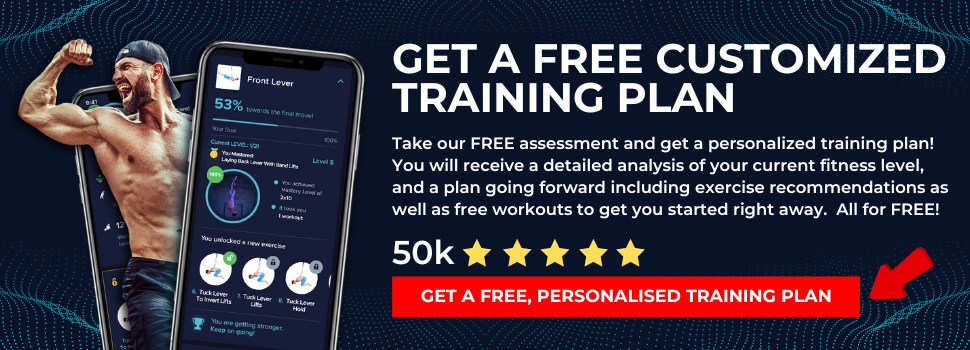About this Progression
The squat progression is a way to build strong muscle and explosive power in your legs.The progressions aimed at the upper body are well balanced out, especially when you combine them with a leg workout. Plus, you’ll get to balance your left and right leg muscles when doing the unilateral progression!
Level
Beginner to Advanced
Goal
To master pistol squats.
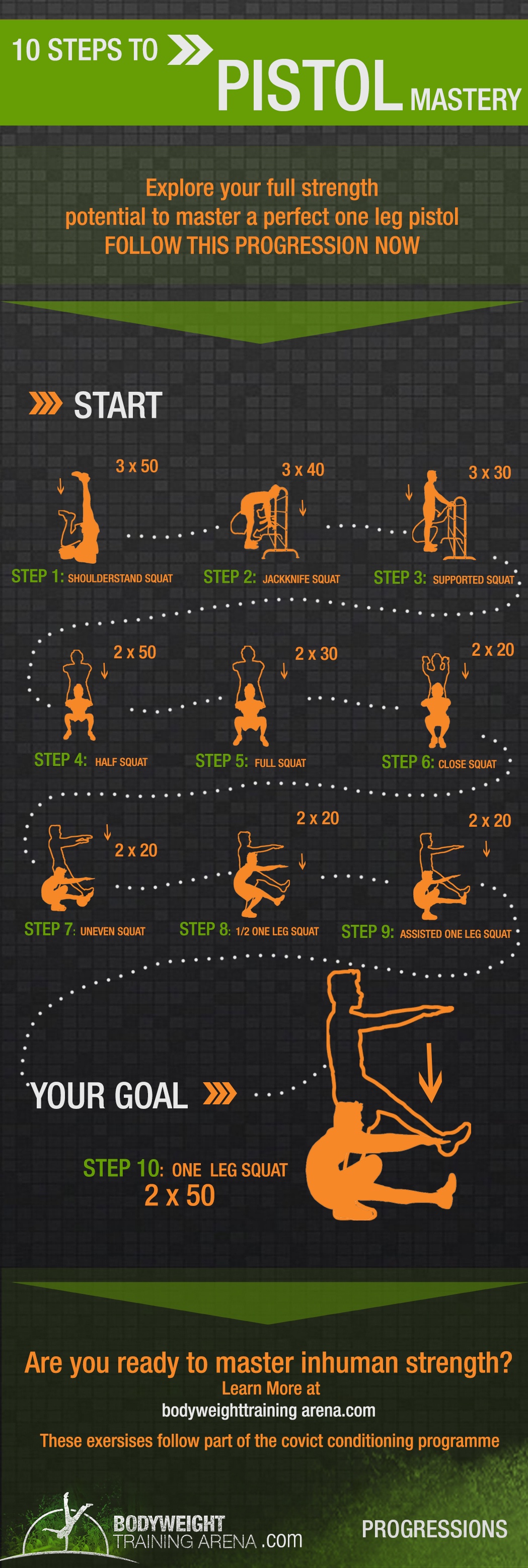
One Pistol Progression Exercises List
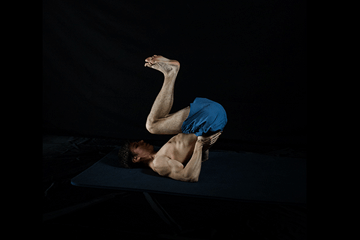
Step 1: Shoulderstand Squats
The beginning of this exercise helps you get used to the sensation on bending and extending your legs. Use your elbows to help you balance on your neck and shoulders and extend your legs straight up in the air. The contraction of your leg muscles here involves bending them down until your knees are near your face and driving your legs back up again.
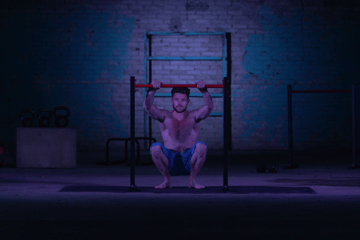
Step 2: Jack Knife Squats
This is a shortened version of a traditional squat. Feel free to use a lowered bar to help you on your way up or down as pictured. Start by bending over, then bending your legs until your thighs are about parallel to the floor. This is a relatively simple exercise done with many repetitions to build your strength and endurance.
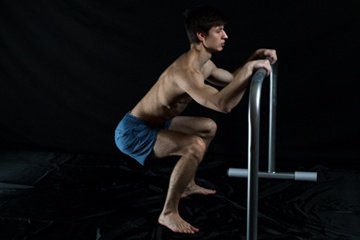
Step 3: Supported Squats
Use a bar to help support your body weight on the way down and up. Start by standing straight up and bend your legs until your backside is almost touching your heels. Use the bar to help your legs push you on your way back up.
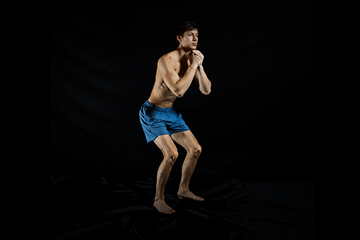
Step 4: Half Squats
Bend your knees with your feet shoulders apart. Squat downwards – but go only mid way down. Then go back up.
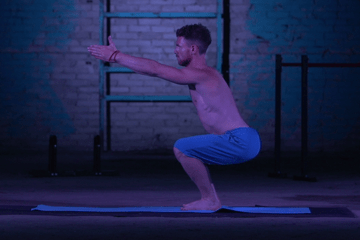
Step 5: Full Squats
The unsupported version of step 3. With your feet shoulder width apart in the standing position, bend your legs until your backside is almost touching your heels and drive upwards using your legs for explosive power in your quads. This is the full range of motion of the basic regular squats.
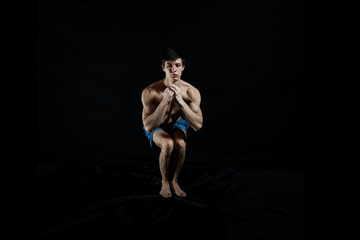
Step 6: Close Squats
This exercise gives the sensation of squatting from a narrow base as you work towards the one-legged pistol squat. Standing straight up with your heels touching, squat down until your thighs are about parallel to the ground and push up. You will feel that your muscles are also working to keep yourself balanced as well as squat.
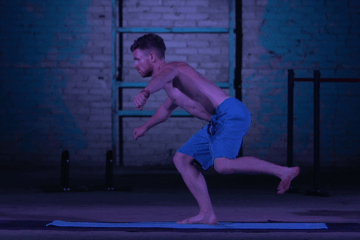
Step 7: Uneven Squats
Start by standing with your heel outstretched on a small exercise ball. Squat down by bending your other leg until your backside is almost touching your heel. Keep the leg which was on the ball straight and roll the ball out in front of your to help support your squatting leg. Push back up. This gives the sensation of squatting using only one leg. Don’t forget to train both legs!
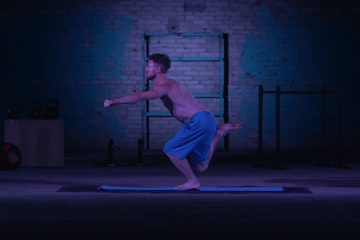
Step 8: Half One-Leg Squats
In this exercise, your leg is now unsupported. This is a one-legged version of step 4. Squat half way down on this leg and push up.
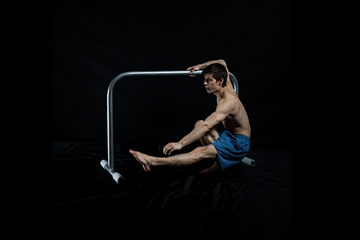
Step 9: Assisted One-Leg Squats
Place an exercise ball underneath your non-squatting leg. Perform a full one-legged squat until your non-squatting leg touches the exercise ball. Use this ball to maintain balance at the bottom of the squat and then push back up. Balance at the bottom of the squat becomes the hardest part of the next step.
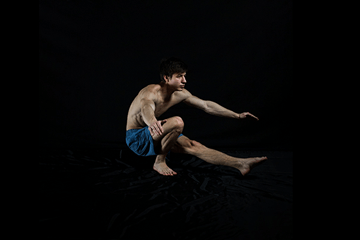
Step 10: One-Leg Squats
Stand on one leg with your other leg slightly outstretched in front of you. Bend your standing leg until your backside is almost touching your heel and keep your other leg perfectly straight and parallel to the floor. As you maintain balance at the bottom, drive your body back up to standing position.
This is a very impressive progression if you can complete it. Your legs are the most explosive and durable muscles in your body, and when trained well, they will be a force to be reckoned with. You’ll never be called “chicken legs” again.

